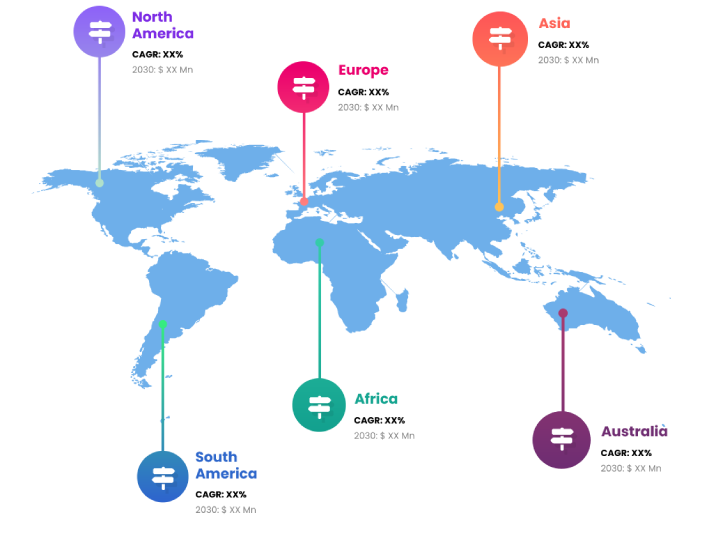
An essential part of a carbon-free power grid is HVDC, or high voltage direct current. Power transmission over vast distances, integration of renewable energy, joining of grids, and the introduction of innovative sustainable power transmission systems are all areas where it excels. Avoiding the high currents needed for the cable capacity of submarine power lines is another useful application of the HVDC technology. Power transfer between asynchronous AC grids and the ability to power big urban areas are both made possible by HVDC. Using a transformer to pull power from the AC grid, a converter station changes the voltage to DC, and then cables run either above or below ground to carry the new DC power to its destination. This system is known as a high-voltage direct current (HVDC) system. At the receiving end, an additional converter is used to transform it to AC.
One major factor propelling the expansion of the HVDC transmission industry is the worldwide trend towards renewable energy sources like solar and wind power. There is a rising urgency to effectively incorporate renewable energy sources into preexisting power networks as more and more nations and areas turn to clean energy sources to fight climate change and cut carbon emissions. For this need, HVDC transmission systems are the way to go. They allow for the efficient transmission of electricity from far renewable sources to densely populated areas and major industrial hubs, with minimal energy loss along the way. Grid stability is another benefit of HVDC technology that makes intermittent renewable energy sources easier to handle. The need for HVDC transmission systems is anticipated to increase, fueling market expansion, as the globe keeps moving towards cleaner energy.
As more and more electricity is generated off-grid and distributed, the need for high-voltage direct current transmission lines has diminished. Rooftop solar panels and small-scale wind turbines are examples of decentralized energy sources that users can use to generate electricity on a local level. Consequently, the need for electricity transmitted over vast distances is reduced. There is less need for substantial grid infrastructure thanks to improvements in energy storage devices, which also enable better management of locally generated electricity.
The electrical energy sector makes use of high voltage direct current transmission technology to reduce electricity losses while transmitting huge amounts of power over long distances. In contrast to conventional alternating current (AC) transmission, which switches the direction of electric power at regular intervals, high voltage direct current (HVDC) systems maintain a steady flow of electric power in one direction. Two converter stations are required for HVDC transmission: one at the sending end and one at the receiving end. Power is transformed from alternating current (AC) to direct current (DC) at the sending end and sent down dedicated cables or overhead traces over long distances. In order to distribute the DC electricity to customers, it is converted back into AC strength at the receiving end.
Benefits of high-voltage direct current (HVDC) transmission in the realm of electrical strength transmission include increased efficiency, the ability to transmit power over longer distances, grid stability, and support for the integration of renewable energy sources. Because there is no skin impact and reactive power losses are lower with HVDC transmission compared to AC transmission, the power losses during transmission are considered to be lower in these systems. The fact that HVDC can carry power over much greater distances with little power loss makes it an ideal choice for linking outlying power plants to major cities.
Transmission systems that are both efficient and flexible are in high demand in industrialized nations. There are a lot of alternatives for energy management mechanisms for AC power transmission available to policymakers and commercial enterprises. One of these is the rise of high-voltage direct current (HVDC) transmission lines, which can carry electricity over great distances with very little loss. When used for both long and small distances under the ground or in the sea, transmission systems can reduce emissions and costs. Highly voltage direct current (HVDC) power transmission systems are ideal for transmitting electricity across enormous distances, like continents or islands, because they provide low power losses and maximum transient efficiency.
Report Coverage
Global HVDC Transmission System research report categorizes the market for global based on various segments and regions, forecasts revenue growth, and analyzes trends in each submarket. Global HVDC Transmission System report analyses the key growth drivers, opportunities, and challenges influencing the global market. Recent market developments and HVDC Transmission System competitive strategies such as expansion, product launch and development, partnership, merger, and acquisition have been included to draw the competitive landscape in the market. The report strategically identifies and profiles the key HVDC Transmission System market players and analyses their core competencies in each global market sub-segments.
| REPORT ATTRIBUTES | DETAILS |
|---|---|
| Study Period | 2017-2031 |
| Base Year | 2023 |
| Forecast Period | 2023-2031 |
| Historical Period | 2017-2021 |
| Unit | Value (USD Billion) |
| Key Companies Profiled | General Electric Company, Siemens AG, ABB Ltd., Toshiba Corporation., Prysmian Group, Schneider Electric SE., Mitsubishi Electric Corporation, Nexans S.A., Hitachi Ltd., NR Electric Co., Ltd. |
| Segments Covered | • By Product |
| Customization Scope | Free report customization (equivalent to up to 3 analyst working days) with purchase. Addition or alteration to country, regional & segment scope |
Key Points Covered in the Report
- Market Revenue of HVDC Transmission System Market from 2021 to 2031.
- Market Forecast for HVDC Transmission System Market from 2021 to 2031.
- Regional Market Share and Revenue from 2021 to 2031.
- Country Market share within region from 2021 to 2031.
- Key Type and Application Revenue and forecast.
- Company Market Share Analysis, HVDC Transmission System competitive scenario, ranking, and detailed company
profiles. - Market driver, restraints, and detailed COVID-19 impact on HVDC Transmission System
Market
Competitive Environment:
The research provides an accurate study of the major organisations and companies operating in the global HVDC Transmission System market, along with a comparative evaluation based on their product portfolios, corporate summaries, geographic reach, business plans, HVDC Transmission System market shares in specific segments, and SWOT analyses. A detailed analysis of the firms' recent news and developments, such as product development, inventions, joint ventures, partnerships, mergers and acquisitions, strategic alliances, and other activities, is also included in the study. This makes it possible to assess the level of market competition as a whole.
List of Major Market Participants
General Electric Company, Siemens AG, ABB Ltd., Toshiba Corporation., Prysmian Group, Schneider Electric SE., Mitsubishi Electric Corporation, Nexans S.A., Hitachi Ltd., NR Electric Co., Ltd.
Primary Target Market
- Market Players of HVDC Transmission System
- Investors
- End-users
- Government Authorities
- Consulting And Research Firm
- Venture capitalists
- Third-party knowledge providers
- Value-Added Resellers (VARs)
Market Segment:
This study forecasts global, regional, and country revenue from 2019 to 2031. INFINITIVE DATA EXPERT has segmented the global HVDC Transmission System market based on the below-mentioned segments:
Global HVDC Transmission System Market, By Component
Transmission Medium (Cables)
Others
Converter Stations
Global HVDC Transmission System market, By Application
Bulk Power Transmission
Interconnecting Grids
Infeed Urban Areas
Global HVDC Transmission System Market, By Technology
Voltage Source Converters (VSC)
Line Commutated Converters (LCC)
Capacitor Commutated Converter (CCC)
Global HVDC Transmission System market, Regional Analysis
- Europe: Germany, Uk, France, Italy, Spain, Russia, Rest of Europe
- The Asia Pacific: China,Japan,India,South Korea,Australia,Rest of Asia Pacific
- South America: Brazil, Argentina, Rest of South America
- Middle East & Africa: UAE, Saudi Arabia, Qatar, South Africa, Rest of Middle East & Africa
You will get in-depth and extensive hvdc transmission system market market research and competitor analysis for your business to help you develop more profound insights into the hvdc transmission system market Market.
Through INFINITIVE Data Expert is a professional Market Research services, I will identify the hvdc transmission system market market size, demand & opportunities, growth rate, and target audience with a comprehensive analysis of your competitors.



